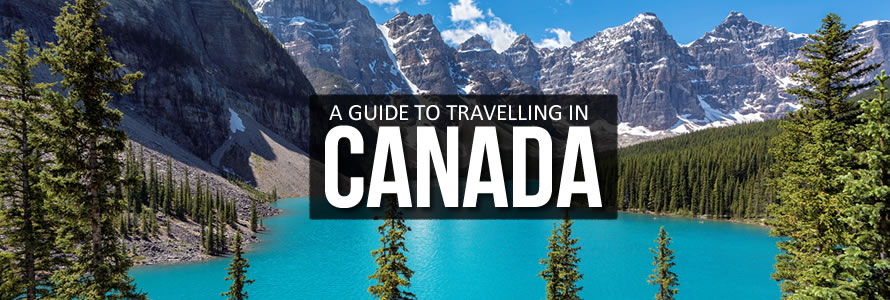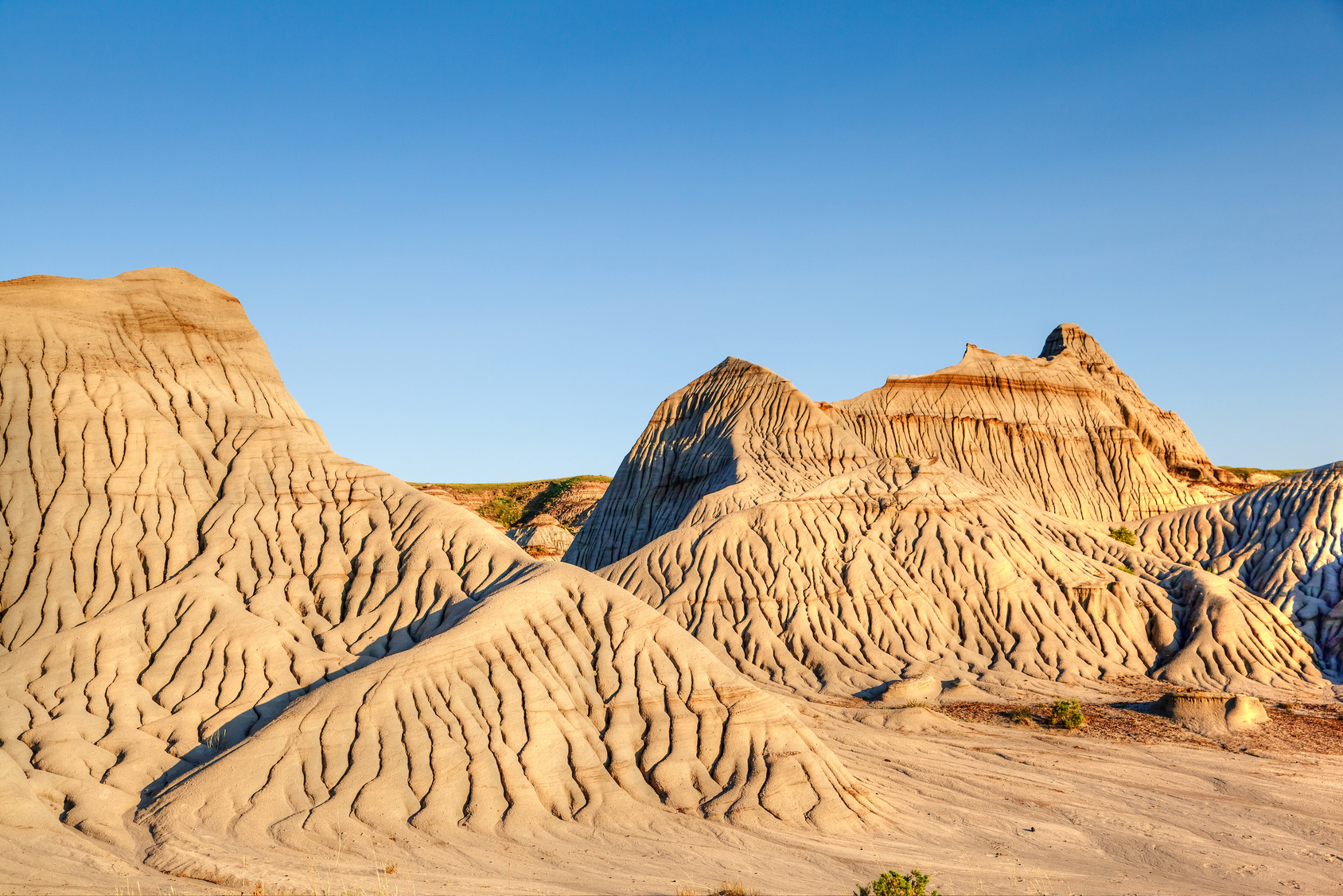Canada is a country impossible to sum up in a few sentences. For starters it is the second largest country on the planet after Russia; to give some idea of scale – it covers six time zones and it is actually a greater distance from its east to west coasts than it is from London to Canada.
But it isn’t just its giant size which makes it rather more like a wonderful collection of destinations than just one nation. Canada is home to the globally iconic and impressively massive Niagara Falls, the Great Lakes, endless prairies and an otherwise astonishing variety of landscapes. It is a land where you can watch everything from polar bears to killer whales in their natural habitat with endless experiences from land, air or sea and offering everything from day trips to total-immersion wilderness exploits. It is a destination which allows you (among other things) to kayak around giant icebergs, ski beautiful mountain regions, visit isolated indigenous settlements, dig up dinosaur remains and enjoy a host of outdoor activities from surfing to dog-sledding.
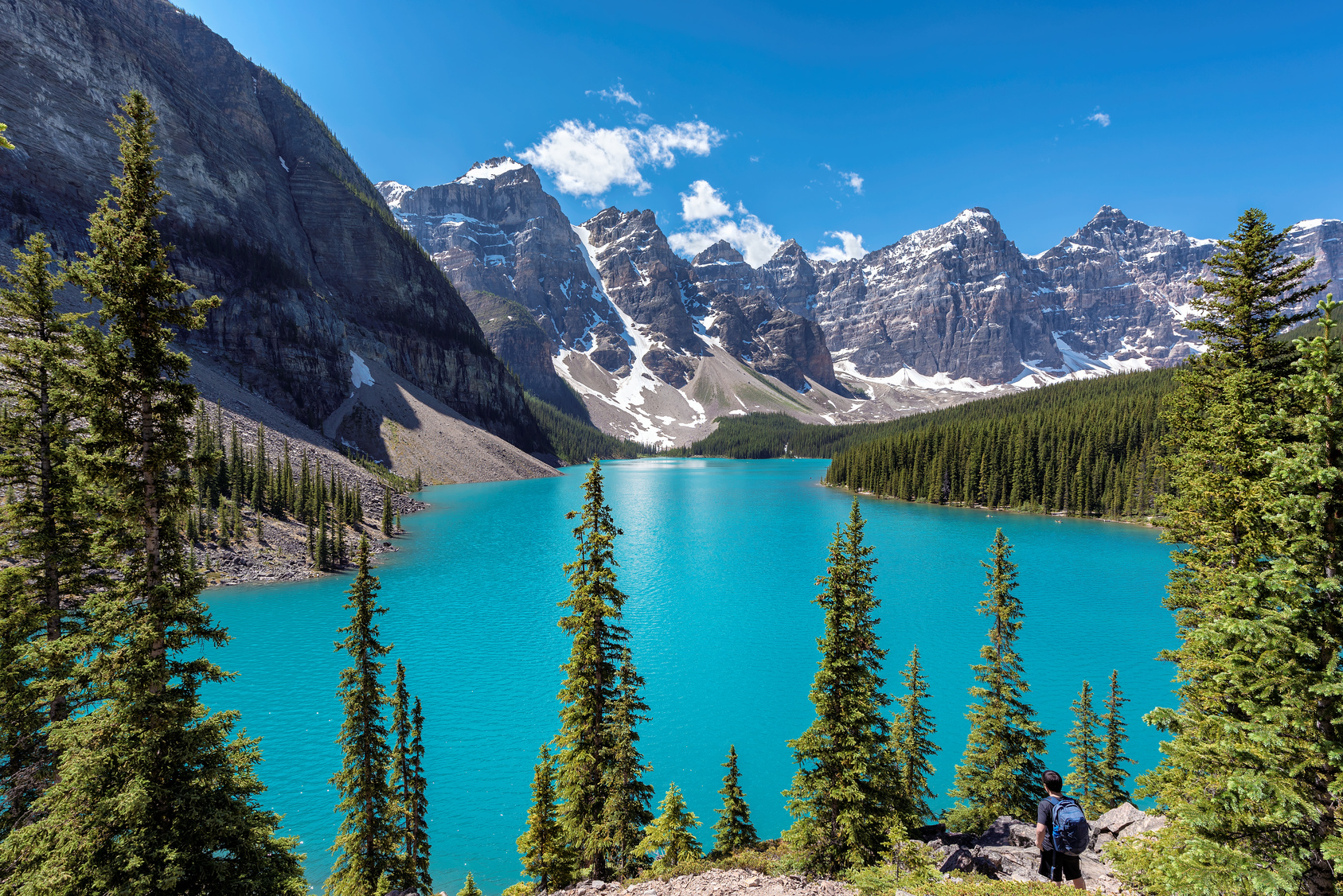
It is home to almost 20 UNESCO World Heritage-listed sites while each of its cities offers something different for urban-lovers on the hunt for a diverse variety of fun experiences, history, attraction choices and buzz. And then there is Quebec; a province of Canada where France is the main language and is a whole culture set apart from the rest of the country.
In short, Canada is a destination which consistently offers its visitors an exhilarating rollercoaster ride of unforgettable experiences and adventure with enough diversity to last a lifetime.
Visas
Although there are several types of visa available, for the vast majority of visitors, an Electronic Travel Authorisation (ETA) is the easiest way to get into Canada for relatively short periods. This low-cost authority can be applied for online before travel and is valid for five years from the date of issue. Most airlines will check you are in possession of this at check-in and will not allow you to board if you are not.
Weather & Seasons in Canada
It’s incredibly huge and its terrain decidedly diverse so a generic guide to the weather in Canada is a little tricky. However, if you are only planning to hit the larger cities, most of these are situated in Canada’s more southerly parts and sit relatively close to the US border with the exception of Calgary and Edmonton. That means they experience less severe weather in the winters (December to February) and have good temperatures in the summer (June to August). Winter lows rarely dip much below a few degrees under freezing while summer highs in excess of 35°C are not unusual.
The weather in more mountainous, remote or northerly places such as Yukon and the Northwest Territories for example are a different story however with winter lows in excess of – 20°C although they may still see summer highs in excess of 20°C. Canada’s coldest city in winter is Winnipeg, Manitoba which regularly dips below – 30°C.
Canada as a whole has four distinct seasons. Summer attracts the most tourists, the higher accommodation prices and the most festivals and annual events although of course winter is when the country becomes a playground for the snow sports enthusiasts.
Accommodation Options in Canada
Generally speaking accommodation costs for travellers in Canada are high – even those typically budget-friendly choices such as hostels. However, there is considerable variety depending on the time of year and the location and there are even some possibilities for freebies. Don’t forget to factor in any taxes which could add considerably to any initial price you see quoted (see money matters). Most larger towns and cities and even some smaller settlements have tourist information offices which will supply you with a list of all your accommodation options in the surrounding area and even help you book it if you want.
Lower Priced Options
Camping – If you are on a budget and love camping you are going to be spoiled for choice in Canada. This country doesn’t just have tons of camping options but also tends to offer them in some of the most naturally beautiful spots you could hope for. Standard prices – usually less expensive for a tent than a camper van – typically start from around the same price as a dorm bed in a hostel but there are several different types of camp-site possible too.
Urban camping – often privately owned and well-kept with a huge variety of prices.
Municipal camp grounds – few facilities make these the cheapest camping options and some are completely free.
National parks – almost all have state-owned camping options. Out of season and in the more out-of-the-way places payment is often by way of an honesty box system.
Wilderness camping – also known as primitive camping or back-country camping, this option allows you to camp (within reason) where you wish but of course you will be without facilities of any kind so will have to be totally self-sufficient.
OTENTik camping – Parks Canada offer these tent/cabin hybrid options for those looking for a little more comfort. With wooden floors and frame draped with canvas, these cute set-ups tend to come complete with beds and furniture too.
Camp sites can get busy during the height of summer, especially those close to the cities or well-known beauty spots such as lakes and rivers.
Hostels – Easily found in all the cities, the backpacker-friendly hostel choices are also situated in some of Canada’s wilderness areas too.
Other Accommodation Options Available
Motels, Motor Hotels & Inns – With a variety of names, these options are typically along the lines of a basic hotel, normally located on highways at the edge of towns and usually attract the lowest prices outside of camping, hostels and such things as Couchsurfing.
Bed & Breakfasts (Gites du Passant in Quebec) – Widely varying in prices, bed and breakfasts – which are becoming ever more populous – are often private homes with rooms converted into guest bedrooms. This makes them a great choice for anyone wanting to meet Canadians rather than other travellers.
Hotels – As is the case throughout the world, hotels can be super basic or the high end of luxury with price tags to match.
Ranch & Farm Stays – If you don’t mind getting your hands dirty you can grab yourself a reasonably-priced or even cheap bed in return for a few hours work on a ranch or farm.
Culture
Canada is a prosperous, modern country with a Western culture and a multitude of historical links with the UK. This means if you too are from a Western influenced culture there will be nothing too unfamiliar or challenging here. However there are a handful of things with regard to cultural issues which overseas visitors might like to be aware of to avoid any faux-pas or causing offence.
- This is not the USA – As is true of all Western-influenced societies, there are of course similarities between the USA and Canada and not just because they border each other and have often very indistinguishable accents when speaking. However, Canadians may not take kindly to being generally heaped together and referred to as ‘American’, having a justifiable pride in their own highly individual national identity and belonging to a country with a very different history of development to that of the USA.
- Quebec – The province of Quebec is distinctly different from the rest of Canada, having been for almost all of its several hundred year’s history colonised by or linked with France. The official language here is French and the culture heavily French influenced and therefore very different from what you will find elsewhere in Canada. With independence from Canada having been a long ongoing issue for Quebecers, many citizens here don’t identify themselves as Canadian at all but as Québécois.
- Indigenous cultures – Long before Europeans of any descent ever arrived on these shores the lands now known as Canada (also Alaska and Greenland) were populated by indigenous people, typically in the more northern boundaries and Arctic areas. Although today much has changed and modernised for these people there are important parts of their culture which are still very much alive including languages, spiritual beliefs, traditions, arts and crafts along with music, dancing and visual arts. Personal identity with this ancient culture is a source of pride and distinction for indigenous peoples and should you be lucky enough to encounter it you need to be aware it is distinctly different.
Food & Drink
As a country strongly influenced by its colonisers, explorers and settlers over the centuries as well as its neighbours to the south, most of what you will find in Canada as regards food and drink will be nothing new to the majority of Europeans or those from the States. As a result there is really no such thing as Canadian cuisine although you might find some variations and specialities as you move from region to region. The one exception to this is French Canadian food which is somewhat more specific, specialised and distinctive.
One iconic Canadian dish which began in Quebec which you might not previously be familiar with and can be found all over Canada is the carb-loaded poutine – a dish of French fries and cheese curds mixed in with gravy.
Another quintessentially Canadian food product found nationwide is maple syrup. All things maple syrup are emblematic of Canada and its history dates back way before Europeans ever found their way here.
The legal drinking age in Canada is either 18 or 19, depending which province you are in. Although it will depend on the province, it is usually only possible to buy liquor in a licensed store which means you can’t just pop down to the supermarket to stock up on your favourite tipple.
Safety
As travelling destinations go it really doesn’t get much safer than Canada which ranks 8th from a total of 163 countries on the Global Peace Index. Violent crime is comparatively low and there is a low incidence of gun-related crime as, unlike the US, gun ownership is not a constitutional right. Like almost everywhere in the world, petty theft is one of the most likely problems you will encounter.
Tolerance to absolute acceptance of all minority groups – including those of varying ethnicity, sexual orientation and religion – is high in this advanced-thinking culture and hate speech is actually against the law. Most of the potential hazards which exist here are all about nature and the forces of nature.
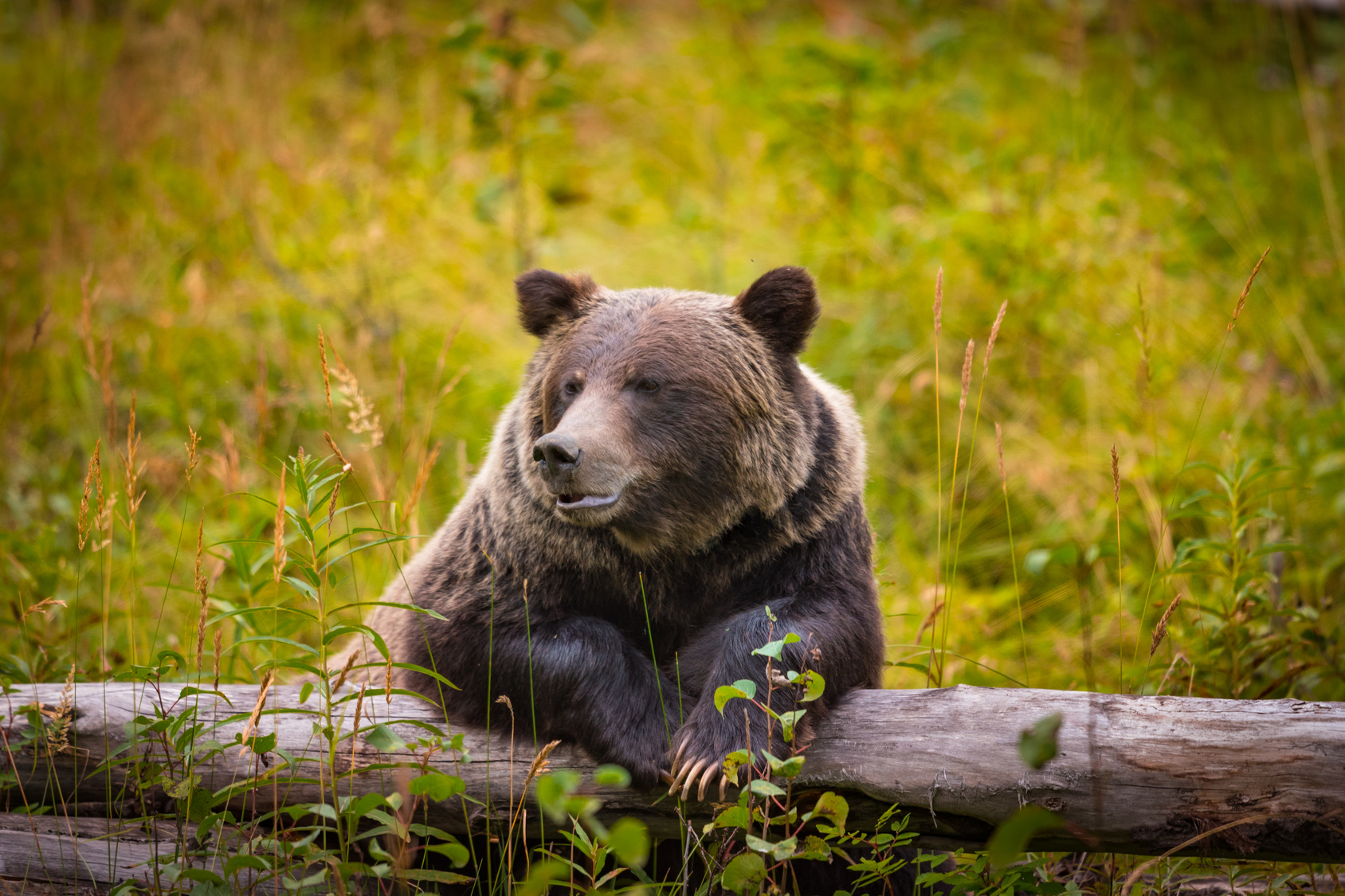
Wildlife – If you intend to get into the wilds of Canada camping or hiking there is a chance you may encounter bears. If so, it pays to do a bit of homework; there is plenty of official advice out there which will tell you all you need to know and help you minimise any risk.
Avalanches – In a country with lots of mountains and snow and heaps of people enjoying such environments for winter sports, avalanche is always a risk. Again, there will always be plenty of advice regarding this issue in areas prone to such events which include Alberta and British Columbia.
Earthquakes – Although relatively infrequent, earthquakes of a high magnitude can and do occur in Canada.
Hurricanes – The main hurricane season is July to November and during these months some of Canada’s coastal regions can be affected.
Tornadoes – Historically, in excess of 60 tornadoes occur in Canada every year with May to September being the highest risk months. Saskatchewan, Alberta and Ontario are where the majority of these tornadoes touch down.
Forest fires – Although relatively common, major, life-taking forest fires are not typically an annual event although certain areas are at constant risk during the warm, dry months. When they do occur and get out of hand the results are typically devastating and cover vast areas. As with all of the other natural hazards present in Canada you will typically have no problem finding information and advice on this if you are in a high-risk area.
Language
Canada has two official languages – English and French. English is the most commonly spoken language everywhere with the exception of Quebec where French dominates. Native French speakers from Europe will tell you there are some distinct differences between the French they know and the French spoken here however.
Money
The currency of Canada is the Canadian dollar, not to be confused with the US dollar – something totally different.
If you come from a Western country you can expect the safety and technology of the banking facilities in Canada to match or exceed what you are used to and ATMs are everywhere.
One thing all visitors to Canada need to be aware of is that when you see prices displayed this is hardly ever what it actually costs because figures are written before tax has been added. There are two types of tax – the across-Canada ‘Federal Goods and Service Tax (GST) of 5% and the ‘Provincial Sales Tax’ which varies enormously depending which province you are in.
Once-upon-a-time visitors to Canada could claim back all GST paid at the end of their trip but this system was scrapped in 2007.
Transport Options
Canada doesn’t really have any cheap transport options although depending on how much ground you wish to cover and what you want to do some choices make more sense than others.
Air – It is further across Canada coast-to-coast than it is from London to Canada which might start to give you some idea of the vast geographical area this stunning country covers. If you want to explore more than one set area or corner and have limited time, flying is the only way to do it.
Bus – Local buses are plentiful everywhere you go and the Greyhound Canada service is an option for crossing provinces or travel between Canada and the US. Travel cards and multi-passes are possible and might help you save money if you intend to use this means of getting from A to B frequently.
Train – Rail travel in Canada is comfortable and safe but it is one of the most expensive ways of doing things.
Car hire – Dollar for dollar, hiring a car can often be one of the cheapest options especially if you share costs and it is certainly a good choice if you want to get to some out of the way places where public transport can’t take you. Be aware that there are often significant surcharges if you don’t want to pick-up and drop off in the same location. Other potential car hire drawbacks include limitations on included kilometres and restrictions on where you can take your hired vehicle.
Camper-van rental – Often a cheaper option than car hire + accommodation, camper van and motor home rental is popular and a vast amount of companies offer this possibility.
Essential Highlights of Canada
Being so enormous and with an almost infinite list of things to do and see, quite what constitutes an essential highlight will in the main depend on personal preferences during your time in Canada. Here’s a quick run-down of some of the most popular of the thousands possible.
Toronto – As the nation’s capital and a melting pot of cultural diversity, Toronto could keep you occupied for years without getting bored. Complete with all you might expect in the way of museums, music venues, galleries, arts performances and installations, cafés and restaurants, sports and shopping there are all kinds of other treats too. Take a trip up the CN Tower, go to an ice-hockey match or stroll the wonderful Bohemian anything-goes area known as Kensington Market. Super popular with students because of its vast variety of low cost eating and drinking places (of every ethnic derivation possible), Kensington Market holds ‘Pedestrian Sundays’ once a month in which you might be able to watch samba bands playing on the roof tops, see an arts performance in the street or join in with the dancers of an African drum band as they make their way up the street.
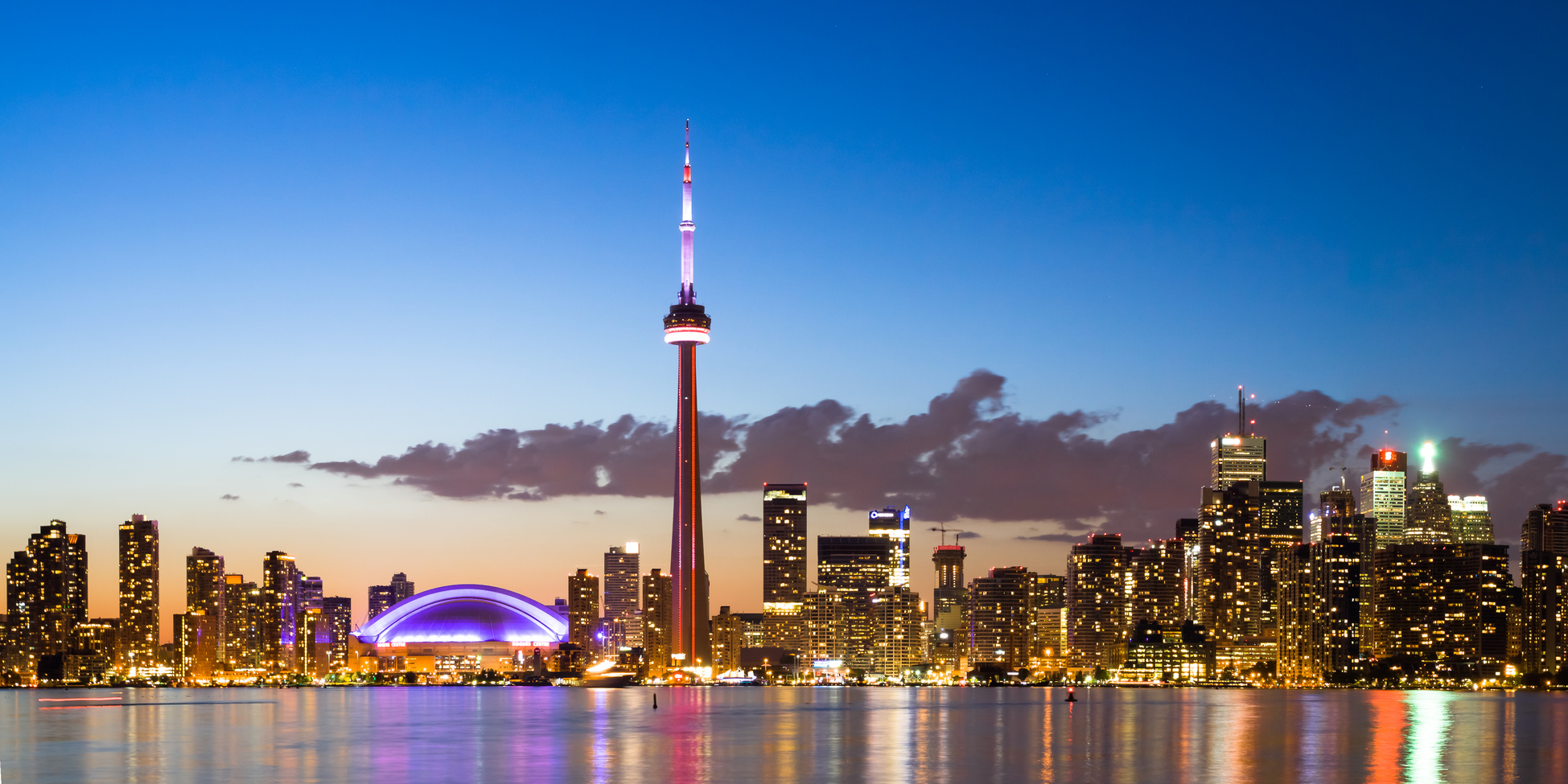
Quebec – Culturally distinct and decidedly different from the rest of the country, charming Quebec is an entire destination in itself. Highlights include Montreal, the train ride to the whale-watching/hiking/skiing/dog-sledding destination of Charlevoix and the beautiful UNESCO World Heritage-listed Old Quebec of Quebec City. This latter – the oldest city on the North American continent – is a treat for history buffs, architecture fans and the art passionate as well as home to a famous winter carnival.
Niagara Falls – This ultimately iconic and instantly recognisable natural wonder comprised of three separate giant waterfalls is undoubtedly spectacular. However, if you are looking for a back-to-nature experience or are hoping to have it all to yourself those days are long gone. On the Canadian side, Niagara Falls is now both highly commercialized and surrounded by casinos.
Winter sports – With plenty of mountains and guaranteed snow in certain parts, Canada has become a popular playground for the winter-sports passionate. The alpine town of Whistler in British Columbia still holds the title as one of the country’s top choices here. In summer Whistler is a popular mountain biking destination.
National parks – Canada’s spectacular wilderness and the wildlife it is home to is one of Canada’s major draw cards. The country has almost 50 national parks, all of them offering something a little different or extra special. Alberta’s Banff National Park is World Heritage-listed and also lays claim to being the country’s first park established, more than 100 years ago. It has more than 1,000 miles of trails for the hiker, a range of stunning lakes for keen kayakers, mountains in winter for skiers, thermal hot springs for those in need of relaxation and an otherwise stunning landscape of Rocky Mountains.
Icebergs and glaciers – Thousands of years old and one of nature’s most impressive sights, the icebergs of Canada come in colours from snowy to turquoise and sizes which range from large to colossal. Iceberg Alley – a stretch of coast which covers both Labrador and Newfoundland – is one of the best spots on Earth for iceberg viewing from spring to summer. These can be viewed from land but for closer views boat tours and the chance to kayak your way around are plentiful.
Drumheller – Located in Alberta’s badlands, Drumheller has a reputation as dinosaur capital of the world. The first dinosaur skull was unearthed in the latter part of the 1800s and fossils and bones have been uncovered regularly ever since. It is possible to enter the site and watch palaeontologists at work or check out the extensive finds displayed at the Royal Tyrrell Museum of Palaeontology.
Whale watching, polar bears and other wildlife – If spotting whales in the wild is on your agenda you have a great chance of success in Canada where the waters are home to more than 30 species including Earth’s largest animal – the blue whale. Locations are everywhere along the coast but some hotspots include Manitoba for belugas, British Columbia for orca (which is actually the largest of the dolphin species), grey whales and humpbacks and Nova Scotia for humpbacks, fin whales, right whales and long-finned pilot whales. You can choose from boat trips, kayak tours or even snorkelling experiences for your whale-watching fun.
Spotting polar bears in the wild is another understandably popular wish-list item of many visitors and this is possible in Manitoba.
Otherwise the list of wildlife you might encounter in Canada is long and there are an almost endless number of possible tours which aim to get you close to the nation’s fauna- from wolves to bald eagles and from moose to mountain lion.

